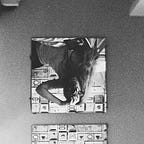Lévitan: The Paris Department Store Where Nazis Bought Stolen Jewish Belongings
When Jewish businessman, Wolff Lévitan founded his namesake department store on the Rue du Faubourg Saint-Martin, Paris, in the early 1930s, he couldn’t have imagined where the future would lead.
In June 1940, Nazi troops invaded France, soon capturing the city of Paris. Much of France remained under German occupation for the next four years.
Life Under the Nazi Occupation
During the occupation, the Nazi regime began ‘processing’ France’s Jewish population. A German census in September 1940 registered 150,000 Jews residing in Paris. In 1942, it became compulsory for Jews to wear the yellow St. David’s star. That same year, the Nazi Reich began transporting Jews to concentration camps.
Of the 75,000 French Jews sent to concentration and death camps, only 2,500 survived.
From October 1940, it was illegal for Jews to own residential or commercial property. Lévitan’s doors closed in 1941, and ownership of the store passed to the Nazis. The store remained empty for two years.
Jewish homes were regularly looted. Any item of value, including clothing, art and furniture was taken. Apartments once owned by Jews were given to Nazi families. The looting of Jewish homes was known as Möbel Aktion; ‘Furniture Operation’. In total, 38,000 Jewish homes were ransacked and cleared.
Lévitan During the Occupation
In 1943, the Nazi Reich reopened the Lévitan store, using it to sell stolen Jewish furniture and household items. In place of staff, almost 800 Jewish prisoners, were forced to prepare, repair and sell the items to Nazi Officers. As in any furniture store, the Nazi customers would be free to browse the items for sale.
These Jewish prisoners were selected and transferred from Drancy internment camp, situated outside of Paris. 164 prisoners were later sent to Auschwitz.
Ultimately, Lévitan became a labour camp, right in the centre of Paris. Prisoners ate and slept on the top floor of the store, living in terrible conditions. Jewish Prisoners would live and work within Lévitan’s walls for anywhere between a few weeks, to a year, before their transfer to Auschwitz. The Lévitan department store was used in this way until the liberation of Paris, in August 1944.
As for Wolff Lévitan, he survived the war. He died in Paris, in 1965. We can only imagine his thoughts on how the Nazi Reich used his former store.
Value of Items
While the story of the Lévitan labour camp, and its looted stock is often overshadowed by more valuable stolen items, such as Gustav Klimt’s Portrait of Adele Bloch-Bauer I (also called The Lady in Gold), we must not overlook the horrifying motive behind Möbel Aktion.
Most stolen items sold at Lévitan were of little value; furnishings such as tables, chairs and beds, but also saucepans, toys and even bedsheets. These were mass-produced items that could be bought in any store, rather than high-value objects. Some of Hitler’s confidants, including Hermann Göring, questioned whether the cost of running the Möbel Aktion operation was worthwhile. But then, this wasn’t an operation driven by money.
In fact, Möbel Aktion was part of the grander plan to annihilate the Jewish race, through total erasure of not only the Jewish population but their every worldly possession.
Lévitan Today
The building still stands and is now used as offices, including the headquarters for a marketing agency. A commemorative plaque reads:
During the German occupation of Paris, and with the help of the French government of Vichy, this building, at that time furniture shop Lévitan, was an annex of the deportation camp of Drancy. Here from july 1943 to August 1944, hundred of Jewish people (whose many were afterwards deported to the camps of Auschwitz and Bergen-Belsen) were obliged to sort the furniture and the objects stolen by nazis in the flats of the Jewish families. Never forget.
For more information on this horrifying scene of history, I recommend reading the photo book, Witnessing the Robbing of the Jews: A Photographic Album, Paris, 1940–1944 by Sarah Gensburge
